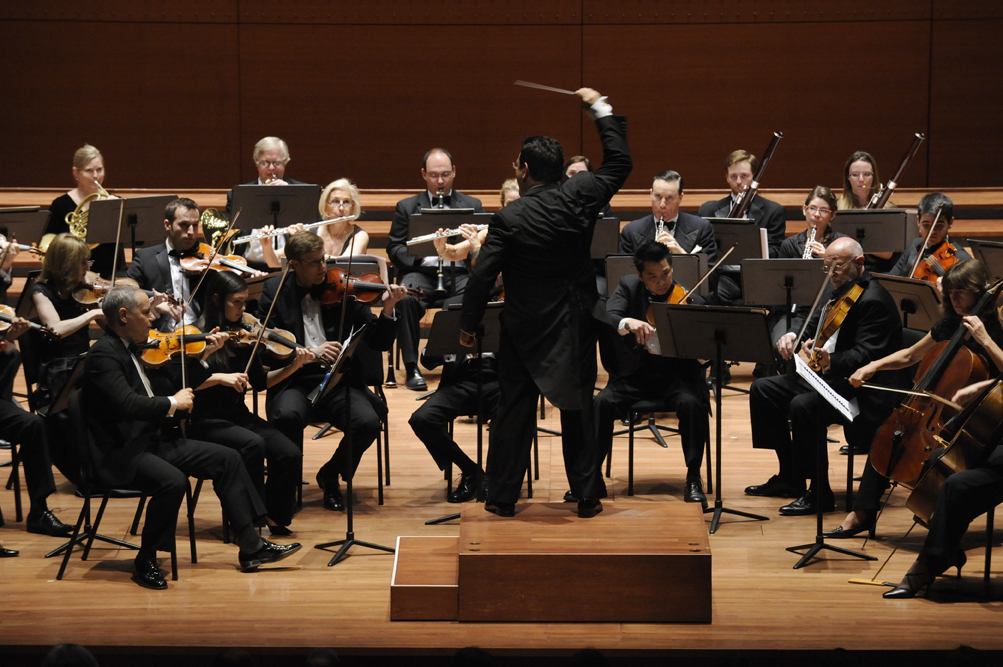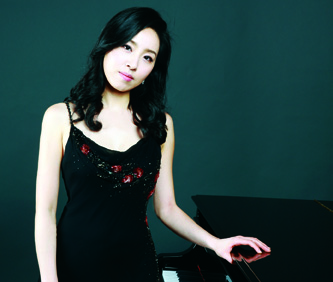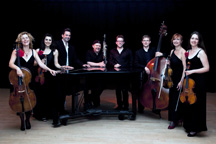As a boy, I mesmerizingly lost myself in books. After all, words mean things, and we are all judged, in part, by the words we use. In those pre-internet days, frequently I hung out at my library, eager to learn what was going on – both near and far. As a budding pianist, one thing that was particularly exciting was discovering famous musicians’ autobiographies – what they said about themselves, others. their lives, and their milieus.
For this writing, I’ve assembled quotes from famous composers, opera singers, instrumentalists and conductors. It is my intent to amuse, and enlighten you with vignettes from some of those revered in the field of music who have shared their thoughts with us.
COMPOSERS
1) Wagner: “Don’t look at the trombones. It only encourages them.” “I write music with an exclamation point!” “Whatever my passions demand of me, I become for the time being – musician, poet, director, author, lecturer or anything else.”
2) Liszt: “Without any assistance whatever, I founded a school in Weimar in 10 years. Only I could perform certain works with the scanty means that I dared not ask anyone else to work with.” “It is my fervent wish and greatest ambition to leave a work with a few useful instructions for the pianists after me.” “In Hungary, all native music, in its origin, is divided naturally into melody destined for song or melody for the dance.”
3) Beethoven: “Music should strike fire from the heart of man, and bring tears from the eyes of woman.” “What you are, you are by accident of birth; what I am, I am by myself. There are and will be a thousand princes; there is only one Beethoven.” “Tones sound, and roar and storm about me until I have set them down in notes.”
4) Rossini: “Wagner has lovely moments but awful quarter hours.” “Give me a laundry-list and I will set it to music.” “Eating, loving, singing and digesting are, in truth, the four acts of the comic opera known as life, and they pass like bubbles of a bottle of champagne. Whoever lets them break without having enjoyed them is a complete fool.”
5) Stravinsky: “Lesser artists borrow, great artists steal.” “Harpists spend 90 percent of their lives tuning their harps and 10 pecent playing out of tune.”The trouble with music appreciation in general is that people are taught to have too much respect for music. They should be taught to love it instead.”
6) Puccini: “Inspiration is an awakening, a quickening of all man’s faculties, and it is manifested in all high artistic achievements.” “Art is a kind of illness.” “Who has sent you to me? God?” In a letter to Liszt. When first hearing Caruso sing.
OPERA SINGERS
1) Domingo: “The high note is not the only thing.” “But I won’t deprive myself of singing opera as long as my voice follows.” “If I rest, I rust.”
2) Melba: “The first rule in opera is the first rule in life: see to everything yourself.” “One of the drawbacks of fame is that one can never escape from it.” “If I’d been a housemaid I’d have been the best in Australia – I couldn’t help it. It’s got to be perfection for me.”
3) Pavarotti: “Learning music by reading about it is like making love by mail.” I think a life in music is a life beautifully spent and this is what I’ve devoted my life to.” “If children are not introduced to music at an early age, I believe something fundamental is actually being taken away from them.”
4) Callas: “An opera begins long before the curtain goes up and ends long after it has come down. It starts in my imagination, it becomes my life, and it stays part of my life long after I’ve left the opera house.” “When my enemies stop hissing, I shall know I’m slipping.” “That is the difference between good teachers and great teachers: good teachers make the best of a pupil’s means; great teachers foresee a pupil’s ends.”
5) Marian Anderson: “It is easy to look back, self-indulgently, feeling pleasantly sorry for onself and saying I didn’t have this and I didn’t have that. But it is only the grown woman regretting the hardships of a little girl who never thought they were hardships at all. She had the things that really mattered.” “A singer starts by having his instrument as a gift from God . . . when you have been given something in a moment of grace, it is sacrilegeous to be greedy.” “When I sing, I don’t want them to see that my face is black. I don’t want them to see that my face is white. I want them to see my soul. And that is colorless.”
6) Beverly Sills: “My voice had a long, nonstop career. It deserves to be put to bed with quiet and dignity, not yanked out every once in a while to see if it can still do what it used to do. It can’t.” “Art is the signature of civilizations.” “You may be disappointed if you fail, but you are doomed if you don’t try.”
INSTRUMENTALISTS
1) Casals: The most perfect technique is that which is not noticed at all.” “Music is the divine way to tell beautiful, poetic things to the heart.” “We should say to each of them [our children]: Do you know what you are? You are a marvel. You are unique. In all the years that have passed, there has never been another child like you. Your legs, your arms, your clever fingers, the way you move. You may become a Shakespeare, a Michelangelo, a Beethoven. You have the capacity for anything. Yes, you are a marvel. And when you grow up, can you then harm another who is, like you, a marvel?”
2) Segovia: “Lean your body forward slightly to support the guitar against your chest, for the poetry of the music should resound in your heart.” “The guitar is a small orchestra. It is polyphonic. Every string is a different color, a different voice.” “The advice I am giving always to all my students is above all to study the music profoundly . . . music is like the ocean, and the instruments are little or bigger islands, very beautiful for the flowers and trees.”
3) Horowitz. “I am a general. My soldiers are the keys and I must command them.” “My face is my passport.” “I must tell you I take terrible risks. Because my playing is very clear, when I make a mistake you hear it. If you want me to play only the notes without any specific dynamics, I will never make one mistake. Never be afraid to dare.”
4) Landowska: “Oh well, you play Bach your way. I’ll play him his.” “I never practice. I always play.” “The most beautiful thing in the world is, precisely, the conjunction of learning and inspiration. Oh, the passion for research and the joy of discovery!”
5) Heifitz: “There is no top. There are always further heights to reach.” “I occasionally play works by contemporary composers and for two reasons. First to discourage the composer from writing any more and secondly to remind myself how much I appreciate Beethoven.” “Criticism does not disturb me, for I am my own severest critic. Always in my playing I strive to surpass myself, and it is this constant struggle that makes music fascinating to me.”
6) Wynton Marsalis: “I believe in professionalism, but playing is not like a job. You have to be grateful to have the opportunity to play.” “There was one thing Beethoven didn’t do. When one of his string quartets was played, you can believe the second violin wasn’t improvising.” “Don’t worry what others say about your music. Pursue whatever you are hearing but if everybody really hates your music maybe you could try some different approaches.”
CONDUCTORS
1) Stokowski: “A painter paints his pictures on canvas. But musicians paint their pictures on silence. We provide the music and you provide the silence.” “As a boy I remember how terribly real the statues of the saints would seem at 7 o’clock Mass – before I’d had breakfast. From that I learned always to conduct hungry.” “On matters of intonation and technicalities I am more than a martinet – I am a martinetissimo.”
2) Ormandy: “Why do you always insist on playing when I’m trying to conduct?” “I’m one of the boys, no better than the last second violinist. I’m just the lucky one standing in the center, telling them how to play.” “Muti* is going to do the Alpine Symphony this year. He will do it well because it is not very well known.”
3) von Karajan: “I find the final passage especially significent and profound, a kind of artistic will and testament.” “I said to the orchestra, ‘If there are discords we must always play them as beautifully as we know how.’ A discord is not an excuse for ugly music-making, for playing out of tune.” “Mahler’s music is full of dangers and traps, and one of them, which many fell into, is oversensualizing the thing until it becomes sort of . . . kitsch.”
4) Toscanini: “Can’t you read? The score demands ‘con amore,’ and what are you doing? You are playing it like married men!” “To some it is Napoleon, to some it is a philosophical struggle, to me it is allegro con brio.”* “If you want to please only the critics, don’t play too loud, too soft, too fast and too slow.”
5) Levine: “I grew up in an era where an orchestra was like a treasure chest.” “It’s just that, when the orchestra looks at me, I want them to see a completely involved person who reflects what we rehearsed, and whose function is to make it possible for them to do it.” “It [the orchestra] has to be able to play at the maximum expression and communication in every style, and the only way you can do that is – like Verdi said – working with a file, every day, little by little, until the orchestra’s collective qualities emerge.”
6) Bernstein (As conductor): “The key to the mystery of a great artist is that for reasons unknown, he will give away his energies and his life just to make sure that one note follows another . . . and leaves us with the feeling that something is right in the world.” “Technique is communication: the two words are synonymous in conductors.” “This will be our reply to violence: to make music more intensely, more beautifully, more devotedly than ever before.”
Afterword
In the spirit of fun and appreciation of all those who have shared their opinions – enriching our lives, I offer a final quote from a much-loved pianist, author, raconteur, comedian and actor, Oscar Levant:
What the world needs is more geniuses with humility. There are so few of us left.
Bless you,
Oscar
by Jim Leeds for New York Concert Review; New York, NY





